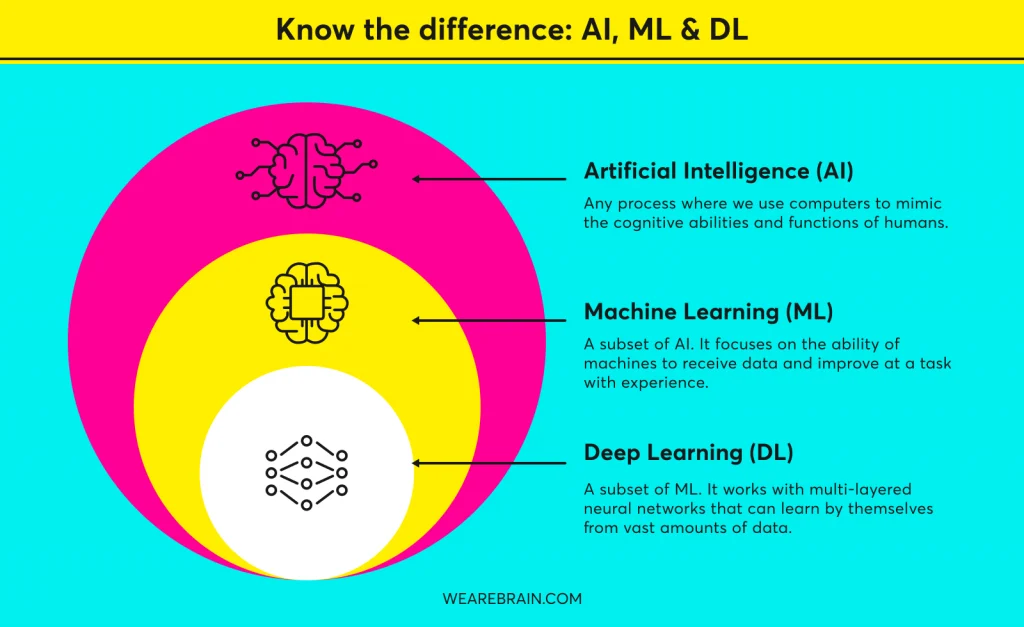Embarking on a research project can be both exciting and daunting. Whether applying for graduate school, seeking funding, or preparing for your thesis, a well-prepared research proposal is your first step toward academic success. This guide will provide you with the fundamental concepts and tools to construct a coherent and persuasive research proposal. You’ll understand the structure and learn how to articulate a clear vision for your study, ensuring your ideas are presented logically and effectively.
We invite you to explore the enriching journey of research proposal preparation. By diving into this article, you will gain valuable insights into creating a document that meets academic standards and intrigues your audience, laying a solid groundwork for your research ambitions.
Overview of a research proposal
A research proposal is a detailed blueprint that outlines your research project, clarifying the investigation’s objectives, significance, and methodological approach. While formats can vary across academic or professional fields, most research proposals share common components that structure your research narrative effectively:
- Title page. Acts as the proposal’s cover, detailing essential aspects such as the project title, your name, your supervisor’s name, and your institution.
- Introduction. Set the stage by introducing the research topic, background, and the core problem your study addresses.
- Literature review. Evaluates relevant existing research to position your project within the broader academic conversation.
- Research design. Details the methodological process, including how data will be collected and analyzed.
- Reference list. Ensures all sources and citations supporting your proposal are clearly documented.
These elements form the structure of your research proposal, each contributing uniquely to the These elements create the framework of your research proposal, each playing a unique role in building a convincing and well-organized argument. In the sections that follow, we’ll explore each component in detail, explaining their purposes and showing you how to implement them effectively.
Objectives of a research proposal
Developing a research proposal is essential for securing funding and advancing in graduate studies. This document outlines your research agenda and demonstrates its significance and practicality to crucial stakeholders such as funding bodies and academic committees. Here’s how each component of the research proposal serves a strategic purpose:
- Relevance. Highlight the originality and significance of your research question. Articulate how your study introduces new perspectives or solutions, enriching the existing body of knowledge in your field. This ties directly to the compelling introduction you prepared, setting the stage for a strong justification of your project’s worth.
- Context. Show a deep understanding of the subject area. Being familiar with the main theories, important research, and current debates helps anchor your study in the scholarly landscape and boosts your credibility as a researcher. This builds on the basic knowledge from the literature review, connecting past studies to your proposed research.
- Methodological approach. Detail the techniques and tools you will employ to collect and analyze data. Explain your chosen methodologies as the most appropriate for addressing your research questions, supporting the design choices explained in the research design section of the research proposal.
- Feasibility. Consider the practical aspects of your research, such as time, resources, and logistics, within the limits of your academic program or funding guidelines. This evaluation ensures that your project is realistic and achievable, which is crucial for funders and institutions.
- Impact and significance. Outline the broader implications of your research. Discuss how the expected outcomes can influence the academic field, contribute to policy-making, or address societal challenges.
Selecting the right proposal length
The appropriate length of a research proposal varies based on its purpose and audience. Proposals for academic coursework might be straightforward, whereas those intended for Ph.D. research or significant funding applications are typically more detailed. Consult with your academic advisor or follow the guidelines from your institution or funding agency to measure the necessary scope. Think of your research proposal as a shorter version of your future thesis or dissertation—without the results and discussion sections. This approach helps you structure it well and cover everything important without adding unnecessary details.
Title page
Having outlined the key objectives and structure of a research proposal, let’s delve into the first essential component: the title page. This in your research proposal serves as the cover and first impression of your project. It includes essential information such as:
- The proposed title of your project
- Your name
- Your supervisor’s name
- Your institution and department
Including this information not only identifies the document but also provides context for the reader. If your proposal is extensive, consider adding an abstract and a table of contents to help navigate your work. The abstract offers a brief summary of your research proposal, highlighting key points and objectives, while the table of contents provides an organized list of sections, making it easier for readers to find specific information.
By presenting a clear and informative title page, you set a professional tone and ensure that all necessary details are readily available to those reviewing your research proposal.

Introduction
With the title page complete, we move on to the introduction, the initial pitch for your project. This section sets the stage for your entire research proposal, clearly and concisely outlining what you plan to investigate and why it is important. Here’s what to include:
- Introduce your topic. Clearly state the subject of your research. Provide a brief overview that captures the essence of what you are investigating.
- Provide necessary background and context. Offer a concise summary of the existing research related to your topic. This helps situate your study within the broader academic landscape and shows that you are building on a solid foundation of existing knowledge.
- Outline your problem statement and research questions. Clearly describe the specific problem or issue your research will address. Present your main research questions that will guide your study.
To effectively guide your introduction, consider including the following information:
- Interest in the topic. Identify who might be interested in your research, such as scientists, policymakers, or industry professionals. This shows the broader relevance and potential impact of your work.
- Current state of knowledge. Summarize what is already known about your topic. Highlight key studies and findings that are relevant to your research.
- Gaps in current knowledge. Point out what is missing or not well understood in the existing research. This helps explain the need for your study and shows that your research will contribute new insights.
- New contributions. Explain what new information or perspectives your research will provide. This could include new data, a novel theoretical approach, or innovative methods.
- Significance of your research. Communicate why your research is worth pursuing. Discuss the potential implications and benefits of your findings, both for advancing knowledge in your field and for practical applications.
A well-prepared introduction outlines your research agenda and engages your readers, encouraging them to see the value and importance of your proposed study.
Literature review
Having introduced your research topic and its significance, the next step is to set the academic foundation for your study through a comprehensive literature review. This section demonstrates your familiarity with key research, theories, and debates relevant to your topic, placing your project within the broader academic context. Below are guidelines on how to effectively compose your literature review.
Purpose of the literature review
The literature review serves multiple purposes:
- Foundation building. It provides a solid grounding in existing knowledge and highlights the context for your research.
- Identifying gaps. It helps identify gaps or inconsistencies in the current body of research that your study aims to address.
- Justifying your study. It justifies the need for your research by showing that your work will contribute new insights or methods.
Key elements to include
To construct a thorough literature review, incorporate these essential elements:
- Survey of key theories and research. Begin by summarizing the major theories and key pieces of research related to your topic. Highlight influential studies and seminal works that have shaped the field.
- Comparative analysis. Compare and contrast different theoretical perspectives and methodologies. Discuss how these approaches have been applied in previous studies and what their findings suggest.
- Evaluation of strengths and weaknesses. Critically evaluate the strengths and limitations of existing research. Point out methodological flaws, gaps in data, or theoretical inconsistencies that your study will address.
- Positioning your research. Explain how your research builds on, challenges, or synthesizes previous work. Clearly articulate how your study will advance understanding in your field.
Strategies for writing your literature review
Organize and present your literature review effectively using these strategies:
- Organize thematically. Structure your review around themes or topics rather than chronologically. This approach allows you to group similar studies together and provide a more coherent analysis.
- Use a conceptual framework. Develop a conceptual framework to organize your literature review. This framework helps link your research questions to the existing literature and provides a clear rationale for your study.
- Highlight your contribution. Make sure to highlight what new perspectives or solutions your research will bring to the field. This could involve introducing novel methodologies, theoretical frameworks, or addressing previously unexplored areas.
Practical tips
Improve the clarity and impact of your literature review with these practical tips:
- Be selective. Focus on the most relevant and impactful studies. Avoid including every piece of research you encounter, and instead, highlight those that are most relevant to your topic.
- Be critical. Don’t just summarize existing research; critically engage with it. Discuss the implications of previous findings and how they inform your research questions.
- Be clear and concise. Write clearly and concisely, ensuring that your review is easy to follow and understand. Avoid jargon and overly complex language.
Conclusion of the literature review
Summarize the key points from your literature review, restating the gaps in knowledge that your study will address. This sets the stage for your research design and methodology, demonstrating that your study is both necessary and well-founded in the existing academic discourse.
Methodology and research design
After selecting the academic foundation in your literature review, the next step is to focus on the methodology and research strategy. This section is crucial as it outlines how you will conduct your research and provides a clear roadmap for your study. It ensures that your project is feasible, methodologically sound, and capable of addressing your research questions effectively. Here’s how to structure this important section:
- Restate your objectives. Begin by restating the main objectives of your research. This reaffirms the focus of your study and transitions smoothly from the literature review to your research design.
- Outline your research strategy. Provide a detailed description of your overall research approach. Specify whether your research will be qualitative, quantitative, or a mix of both. Clarify whether you conducting original data collection or analyzing primary and secondary sources. Describe whether your study will be descriptive, correlational, or experimental in nature.
- Describe your population and sample. Clearly define who or what you will study. Identify your study subjects (e.g., undergraduate students at a large university or historical documents from the early 20th century). Explain how you will select your subjects, whether through probability sampling, non-probability sampling, or another method. Specify when and where you will collect your data.
- Detail your research methods. Explain the tools and procedures you will use to collect and analyze your data. Describe the instruments and techniques (such as surveys, interviews, observational studies, or experiments). Explain why you have chosen these particular methods as the most effective for answering your research questions.
- Address practical considerations. Consider and outline the practical aspects of your research to ensure it is achievable. Estimate the time required for each stage of your study. Discuss how you will get access to your population or data sources and consider any permissions or ethical clearances needed. Identify any potential obstacles you might face and propose strategies to address them.
- Ensuring methodological precision. Ensure your approach is well-planned and capable of producing reliable and valid results. Highlight how your chosen methods align with your research objectives and address the gaps identified in the literature review.
Providing a comprehensive methodology and research strategy section assures reviewers of your project’s feasibility and shows your readiness to undertake the study.
Research impact and significance
The expected impact of this research proposal extends beyond academic circles into policy formulation and societal benefit, reflecting its broad relevance and significance. By addressing [specific topic], the study aims to contribute significantly to the existing body of knowledge while providing practical solutions that can be implemented in real-world settings.
Field influence
The findings of the research proposal are expected to challenge and potentially reshape current theories and practices within the field of [relevant field]. By exploring innovative methodologies or uncovering new data, the study could pave the way for more effective strategies in [specific application], influencing academic research and practical applications.
Policy impact
The project is ready to inform policy decisions by providing evidence-based recommendations that policymakers can directly use. For example, insights derived from the study could influence [specific policy area], leading to improved [policy outcome], which could significantly enhance [specific aspect of public life].
Societal contributions
The societal implications of the research proposal are profound. It aims to address [key societal challenge], thereby improving quality of life and promoting long-lasting practices. The potential for widespread adoption of the study’s outcomes could lead to significant improvements in [area of societal impact], such as increasing access to [critical resources] or improving public health standards.
Overall, the significance of the research proposal lies in its dual ability to advance academic understanding and produce real, beneficial changes in policy and society. By funding the project, [funding body] will be supporting a groundbreaking study with the potential to deliver significant results that match broader goals of social progress and innovation.

Reference list
After highlighting the potential impacts of the research, it is crucial to acknowledge the foundation underpinning these insights: the sources. This section of the research proposal is vital for substantiating the arguments presented and upholding academic integrity. Here, every source and citation used throughout your proposal should be carefully documented. This documentation provides a roadmap for validation and further exploration, ensuring that every claim or statement can be traced back to its source.
Such thorough documentation improves the proposal’s credibility, allowing readers and reviewers to verify the sources of your ideas and findings easily. By diligently keeping a detailed reference list, you uphold academic standards and strengthen the scholarly basis of your research proposal. This practice supports transparency and encourages deeper engagement and follow-up by interested students and practitioners.
Detailed timeline for research project execution
After detailing the components of the research proposal structure, it’s crucial to set a clear timeline for the research project. This example schedule guides you through the necessary steps to meet typical academic and funding cycle deadlines:
- Preliminary research and framework development
- Objective. Conduct initial meetings with your advisor, extensively review relevant literature, and refine your research questions based on the insights earned.
- Example deadline. January 14th
- Designing the research methodology
- Objective. Develop and finalize the data collection methods, such as surveys and interview protocols, and set the analytical approaches for the data.
- Example deadline. February 2nd
- Data collection
- Objective. Start finding participants, distribute surveys, and conduct initial interviews. Make sure all data collection tools are working properly.
- Example deadline. March 10th
- Data processing and initial analysis
- Objective. Process the collected data, including the transcription and coding of interviews. Begin statistical and thematic analysis of the datasets.
- Example deadline. April 10th
- Drafting the findings
- Objective. Collect the initial draft of the results and discussion sections. Review this draft with your advisor and integrate their feedback.
- Example deadline. May 30th
- Final revisions and submission preparation
- Objective. Revise the draft based on feedback, complete the final proofreading, and prepare the document for submission, including printing and binding.
- Example deadline. July 10th
These example deadlines serve as a framework to help you organize and manage your time effectively throughout the academic year. This structure ensures that each step of the research proposal is completed methodically and on time, promoting transparency and assisting in meeting educational and financing deadlines.
Budget overview
Following our detailed project timeline, it’s key to note that a budget overview is a standard and crucial part of academic research proposals. This section gives funders a clear view of anticipated costs, showing how money will be carefully used throughout the project. Including a budget makes sure all possible expenses are considered, proving to funders that the project is well-organized and financially sound:
- Personnel costs. Specify the salaries or stipends for research assistants and other team members, including their roles and the employment duration. Clarify the importance of each team member to the project’s success, ensuring their roles are directly linked to specific project outcomes.
- Travel expenses. Detail costs associated with fieldwork or archival visits, including transportation, accommodation, and daily allowances. Explain the necessity of each trip about your research objectives, highlighting how these activities contribute to data collection and overall project success.
- Equipment and materials. List all essential equipment, software, or supplies necessary for the project. Describe how these tools are critical for effective data collection and analysis, supporting the methodological integrity of the research.
- Miscellaneous costs. Account for additional expenses such as publication fees, conference participation, and unforeseen expenses. Include a contingency fund to cover unexpected costs, providing a cause for the estimated amount based on potential project risks.
Each budget item is calculated using data from suppliers, standard service rates, or average salaries for research roles, improving the budget’s credibility and transparency. This level of detail fulfills the funder’s requirements and showcases the thorough planning that backs the research proposal.
By explaining each expense clearly, this budget overview allows funding bodies to see how their investment will directly support the successful performance of your research, aligning financial resources with projected outcomes and milestones.
Potential challenges and mitigation strategies
As we near the conclusion of this research proposal, it’s crucial to predict and plan for potential challenges that could impact the study’s success. Identifying these challenges early and proposing concrete strategies to overcome them, you underscore your commitment to a successful and achievable project.
Identification of potential challenges
In planning the research proposal, you need to consider several potential drawbacks:
- Access to participants. Engaging the target demographic can be challenging due to privacy concerns or lack of interest, which might restrict data collection.
- Data reliability. Keeping the reliability and validity of data is crucial, especially when dealing with subjective responses or observations. Inconsistencies here could compromise the study’s outcomes.
- Technological limitations. Encountering technical issues with data collection tools or analysis software can lead to delays and disrupt the research process, affecting the timeline and quality of findings.
Handling strategies
To effectively address these challenges, the following strategies need to be integrated into the research proposal:
- Building relationships and gaining trust. Early engagement with community leaders or relevant institutions will simplify access to participants. This includes securing the necessary permissions and ethical clearances well in advance of data collection.
- Careful research design. Set up a strong plan for collecting data, including trial runs to improve methods and tools, ensuring the data you collect is reliable.
- Technological preparedness. Create backup systems, and ensure all team members are trained to efficiently handle the necessary technology. Launch partnerships with technical support teams to ensure any issues that arise are quickly resolved.
Actively addressing these challenges, the research proposal shows funders and academic committees that the project is strong and can handle difficulties well. This approach makes the proposal more trustworthy and shows careful planning and foresight.

Ethical considerations in research proposals
As briefly mentioned in the previous section, ethical considerations are critical in your research proposal. It’s crucial to delve deeper into these principles to ensure the protection and respect of all participants, encouraging trust and credibility in your study. Key ethical practices include:
- Informed agreement. Get informed permission from each participant before the study begins. Provide detailed information about the nature of the research, their role in it, potential risks, and benefits. This information is provided verbally and in writing, with consent documented through signed forms.
- Confidentiality. Ensure participant confidentiality by immediately removing all personal identifiers from the data after collection. Store the data on secure, password-protected servers, accessible only to you and your primary research team. Report findings in aggregate form to guarantee that no individual can be identified.
- Addressing ethical issues. If any ethical issues come up during your research, discuss them right away with your supervising ethics committee. Quickly resolve these issues, always putting your participants’ well-being and preferences first.
- Ethical training. Ensure you and your research team undergo regular training in ethical research practices. Stay updated on current regulations and ensure all members are prepared to handle ethical dilemmas professionally.
By following these steps, your research meets institutional and legal ethical standards and supports a respectful and responsible research environment.
Implications and contributions of the research
As we almost conclude our discussion on the research proposal, it’s crucial to consider the broad impact and significant contributions of your study. This section highlights the transformative potential of your research within your field. By examining these implications, you underscore the relevance of your work and its potential to drive markable change and innovation.
Here are the key ways in which your research is set to make a meaningful impact:
- Improving best practices. Your findings could improve methods or practices in your field, setting new benchmarks for future research.
- Influencing policy decisions. With solid, data-backed insights, your research might shape local or national policies, leading to better-informed decisions.
- Strengthening theoretical frameworks. Your work could support or refine existing theories, improving academic discussions with fresh perspectives.
- Challenging established norms. Your results may challenge current beliefs or common ideas, encouraging a reevaluation of what is widely accepted.
- Laying groundwork for future studies. By identifying new areas for inquiry, your study sets the stage for future investigations.
This overview of potential contributions demonstrates the extensive and significant impact your research could achieve. By detailing these outcomes, your proposal highlights the relevance of your study and aligns its objectives with the priorities of funding bodies and academic institutions. It presents your research as a valuable investment capable of advancing knowledge and addressing key issues.
Illustrative examples of research proposals
After exploring the essential components and strategies for preparing a compelling research proposal, let’s look at practical examples to enhance your understanding further. These illustrative examples demonstrate various approaches and methodologies, providing tangible references to help you get started on your own proposal:
- The Dynamics of Narrative Persuasion – This proposal outlines a study on how narratives influence individual beliefs over time.
- Examining the Role of Stress in Relapse among Former Smokers – This research aims to investigate the triggers of relapse in individuals who have quit smoking.
- Social Media and Adolescent Mental Health: Risks and Benefits – This proposal examines the impact of social media usage on the mental health of adolescents.
These examples provide a glimpse into the structure and detail required in research proposals, helping you to better understand how to articulate your own research ideas effectively.
Improve your research proposal with our services
Having delved into the structure and examples of crafting effective research proposals, it’s essential to guarantee the final document’s authenticity and clarity. Our comprehensive suite of services is tailored to boost your proposal’s quality and prepare it for academic success:
- Plagiarism checker. Use our advanced plagiarism checker to set apart your proposal from existing academic work. This tool provides a detailed similarity score, featuring sophisticated algorithms that detect subtle instances of plagiarism. It also includes a risk score that sets the likelihood of parts of your proposal being perceived as unoriginal. Additionally, our citation analysis ensures all references are accurately recognized, and the paraphrasing score highlights rephrased content, which helps keep the integrity of your academic writing.
- Plagiarism removal. If plagiarism is detected, our skilled editors are prepared to responsibly revise your content. This service includes removing problematic sections, adding missing citations, rewriting content appropriately, and correcting citation errors. This thorough approach ensures your proposal adheres to the highest standards of academic integrity, preparing it for strict review.
- Document revision. Elevate the overall quality of your research proposal with our document revision service. This includes detailed proofreading and comprehensive editing to improve grammar, style, coherence, and flow. Our expert editors adhere to strict editorial standards, transforming your document into a clear, concise, and compelling research proposal.
These services not only improve the quality of your research proposal but also ensure it has a strong, positive impact during academic reviews and funding considerations. Our professional services are designed to help you present a well-prepared, thoroughly checked proposal that stands out in academic and professional assessments.
Conclusion
| This guide has prepared you with a thorough understanding of how to structure a successful research proposal, highlighting essential elements and strategic approaches. By applying the insights and techniques discussed, you are well-prepared to present a clear vision, demonstrate the significance of your research, and devise a practical, ethically sound approach to address potential challenges. As you start your research journey, remember that the effectiveness of a compelling research proposal lies in its clear communication of objectives and meticulous methodological planning. Begin your research with confidence, inspired to achieve academic success and make meaningful contributions to your field! |






































